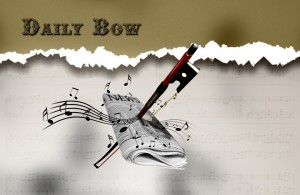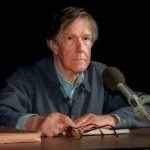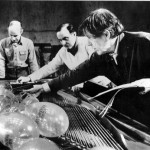Happy Labor Day to all of you out there. This week is a very special one for classical music. With the 100th anniversary of iconic composer John Cage coming up on Wednesday, we will be witnessing the first celebration of Cage’s life and music of this scale in the nation’s capital.
Tomorrow, the John Cage Centennial Festival will begin: an eight-day series of performance, tribute, and reflection on the impact and controversy of John Cage’s musical life.
To many artists, he was one of the most inspiring figures of the 20th century. To some musicians, he is underrated: branded, unfairly, more important as a thinker than a composer. And to a large segment of the public, he’s a charlatan: a man who convinced some people that sitting onstage in silence for four minutes and 33 seconds could be construed as performing a work of music.
John Cage — composer, philosopher, visual artist, mushroom enthusiast — would have been 100 years old on Wednesday. This week Washington, usually somewhat conservative in its musical tastes, is challenging its own image with an eight-day celebration, opening Tuesday and spread throughout some of the city’s flagship arts institutions, that may be the largest Cage centennial in the country.
The festival honors Cage the polymath, touching on every aspect of his creativity: theater pieces, visual arts, dance, as well as music. Certainly it will include plenty of Cage’s music: more than 60 Cage works, many of them performed by heavy-hitting musicians who worked closely with him (Irvine Arditti, Margaret Leng Tan). But a look at the participating venues says a lot about Cage’s legacy — and about Washington. The National Gallery of Art, the Phillips Collection, the Corcoran, and the Hirshhorn are hosting shows, concerts, lectures. But the Kennedy Center, Washington’s leading performing arts institution, is not involved. Nor is the Washington Performing Arts Society.
In short: the art world has no problem accepting and celebrating the work of John Cage. But in the classical music establishment, Cage the composer remains suspect, too modern — and one of the most underperformed figures of any major composer.
Who was John Cage…
Read the full article to find out! John Cage Centennial Festival: Will it silence critics in Washington?
Mr. Cage has certainly been a powerful force in the last century of the arts. But the reluctance of the public-at-large to accept his work as truly “art” remains very telling of contemporary composers and audiences. On the one hand, we can greatly admire Cage for not comprising his artistic soul in “catering or pandering” to the masses. In doing so he broke new ground on many levels.
However, at the same time, we have to question whether some of his output (a majority some would argue) is actually worthy of the praise Cage has garnered. For example, many years ago when I was in Paris I visited the Centre Pompidou – the museum for modern art. I found a “picture” by John Cage on the wall. It consisted of no more than a piece of paper with squiggly circles drawn in pencil.
You can analyze and debate the “meaning” of the work all you want. The fact is that a 3-year old could do that. Does putting that out there and giving it a so-called “deeper” meaning make it “art”?
We’ll no doubt hear many of these debates over the next couple weeks. Stay tuned for more on the John Cage Centennial Festival here at String Visions and on our social media channels (join us on Facebook and Twitter to engage in the conversation).



















No comments yet.